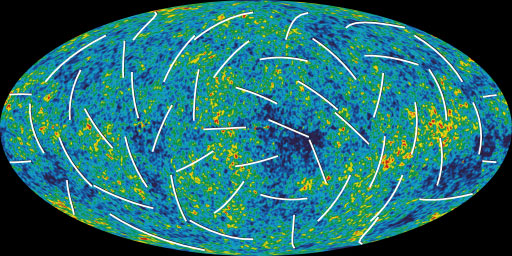Recent results from the Wilkinson Microwave Anisotropy Probe and Future Directions |
Cosmological observations based on a wide variety of methods are in good agreement on the contents and history of the universe. The universe contains roughly 4% baryons, 23% of a new kind of matter we hope to understand with future particle accelerators, and 73% of a new kind of effective pressure or energy that has yet to find explanation in fundamental theories. In the standard model, quantum fluctuations in the early universe led to the fluctuations in gravitational potential that seeded the formation of cosmic structure. The inflation model (and others) predict the spectrum of these fluctuations. WMAP's measurement of the CMB polarization allows us to break a number of cosmic parameter degeneracies, measure the spectrum of fluctuations, and begin to test specific models of inflation. In other words, through measurements of the CMB, we are now testing the physics of quantum fluctuations in the universe when it was less than 10^{-20} seconds old. We discuss the WMAP measurements and their interpretation and conclude with a brief look at future experiments with an emphasis on ACT. |
|
